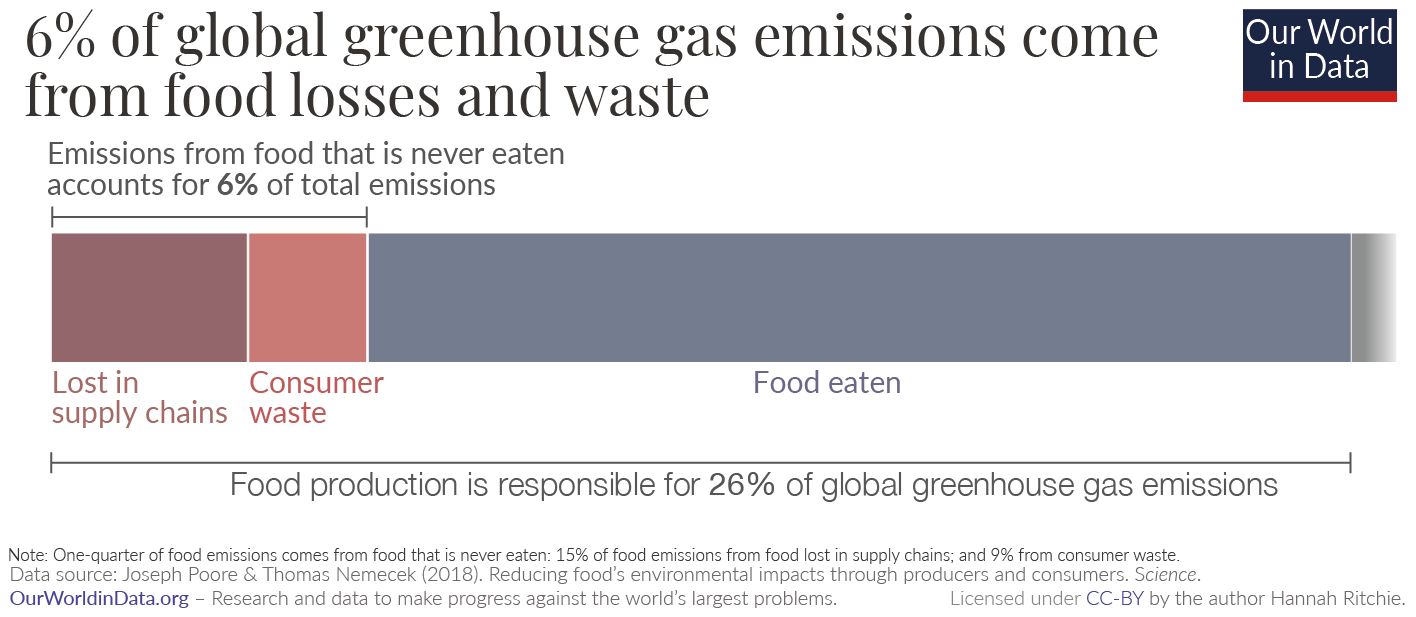Food production accounts for around one-quarter – 26% – of global greenhouse gas emissions.1 This is a lot, but it’s slightly easier to digest when we remind ourselves that food is a basic human need.
What’s harder to make sense of is the amount of greenhouse gas emissions which are caused in the production of food that is never eaten.
Around one-quarter of the calories the world produces are thrown away; they’re spoiled or spilled in supply chains; or are wasted by retailers, restaurants and consumers.2 To produce this food we need land, water, energy, and fertilizer inputs. It all comes at an environmental cost.
Joseph Poore and Thomas Nemecek (2018), in their large meta-analysis of global food systems, published in Science, estimated how much of our greenhouse gas emissions come from wasted food.3
In the visualization here I show the emissions from wasted food in the context of global greenhouse gas emissions.
The study by Poore and Nemecek (2018) found that almost one-quarter – 24% – of food’s emissions come from food that is lost in supply chains or wasted by consumers. Almost two-thirds of this (15% of food emissions) comes from losses in the supply chain which result from poor storage and handling techniques; lack of refrigeration; and spoilage in transport and processing. The other 9% comes from food thrown away by retailers and consumers.
This means that food wastage is responsible for around 6% of total global greenhouse gas emissions.4 In fact, it’s likely to be slightly higher since the analysis from Poore and Nemecek (2018) does not include food losses on the farm during production and harvesting.
To put this in context: it’s around three times the global emissions from aviation.5 Or, if we were to put it in the context of national emissions, it would be the world’s third largest emitter.6 Only China (21%) and the United States (13%) emitted more.7


